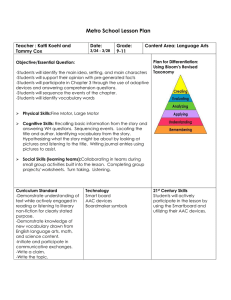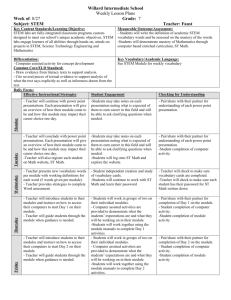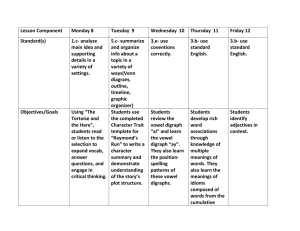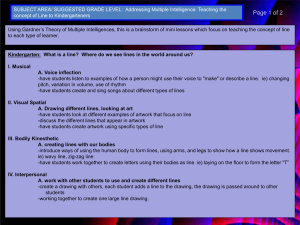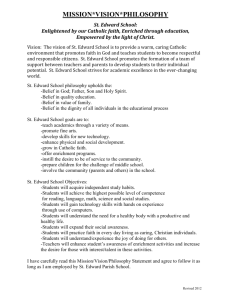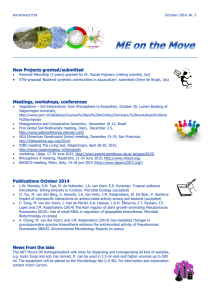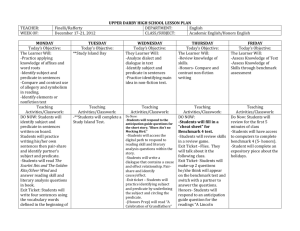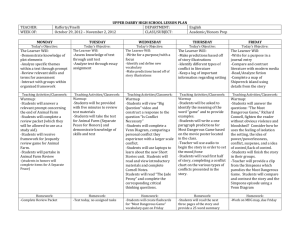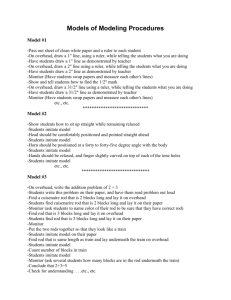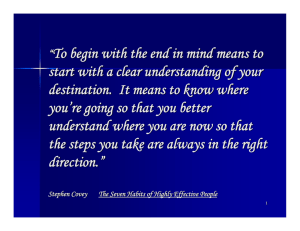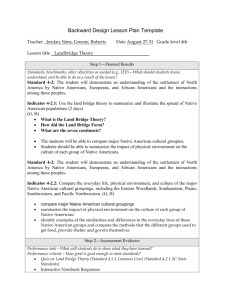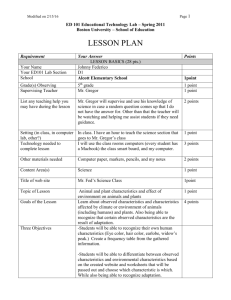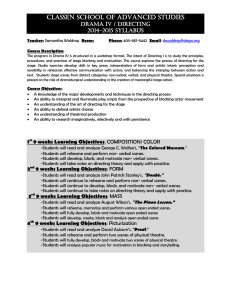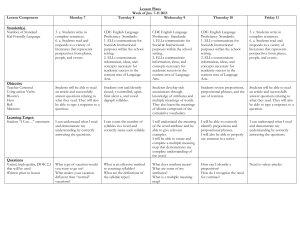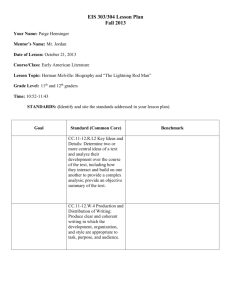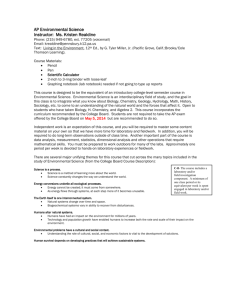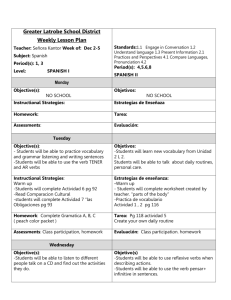EXPLANATION OF LESSON PLAN TERMINOLOGY
advertisement
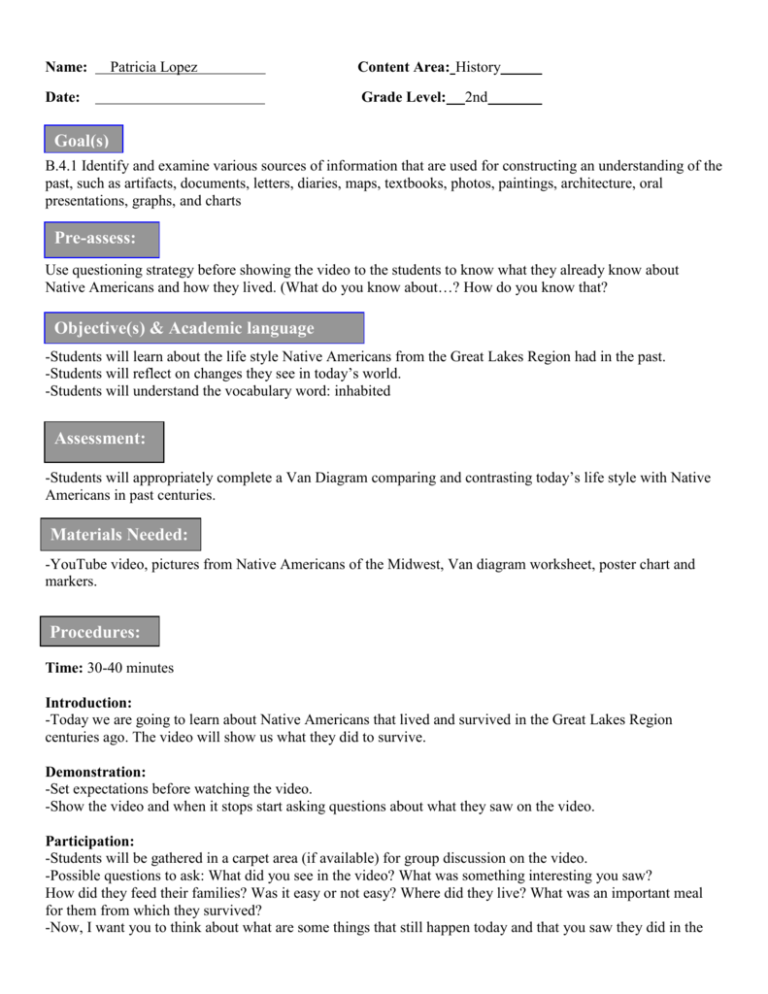
Name: Patricia Lopez Date: Content Area: History Grade Level: 2nd Goal(s) : Identify and examine various sources of information that are used for constructing an understanding of the B.4.1 past, such as artifacts, documents, letters, diaries, maps, textbooks, photos, paintings, architecture, oral presentations, graphs, and charts Pre-assess: Use questioning strategy before showing the video to the students to know what they already know about Native Americans and how they lived. (What do you know about…? How do you know that? Objective(s) & Academic language focus will learn about the life style Native Americans from the Great Lakes Region had in the past. -Students -Students will reflect on changes they see in today’s world. -Students will understand the vocabulary word: inhabited Assessment: -Students will appropriately complete a Van Diagram comparing and contrasting today’s life style with Native Americans in past centuries. Materials Needed: -YouTube video, pictures from Native Americans of the Midwest, Van diagram worksheet, poster chart and markers. :Procedures: Time: 30-40 minutes Introduction: -Today we are going to learn about Native Americans that lived and survived in the Great Lakes Region centuries ago. The video will show us what they did to survive. Demonstration: -Set expectations before watching the video. -Show the video and when it stops start asking questions about what they saw on the video. Participation: -Students will be gathered in a carpet area (if available) for group discussion on the video. -Possible questions to ask: What did you see in the video? What was something interesting you saw? How did they feed their families? Was it easy or not easy? Where did they live? What was an important meal for them from which they survived? -Now, I want you to think about what are some things that still happen today and that you saw they did in the past? Turn and talk to your partner and share your thinking. - What has changed? What has improved? What are some similarities? Possible Thinking Questions: Possible questions: In what ways can we say things in the past have changed to today? What are some changes you see? How have they improved or not improved? What is something that we do not do this day? What is something beneficial they did in the past? What is something beneficial today they did not do in the past? What about where we get the food? What about their houses? What are some things that were used in the past that are still being used today? Practice: -Tell the students that they are going to be comparing and contrasting about the differences between events that happened in the past and events that are happening now. -You are going to fill out a Van diagram to compare and contrast the way Native people lived and the way we live today. -Have a poster ready with a van diagram drawn on it to demonstrate to the students how they will be filling it out. As you explain and give examples, try to use your think aloud voice. -I will show you how to do it. For example, something to compare is that they had to plant and harvest their own food to eat. This compares to today because we do not have to plant and harvest our own food, we can buy it at the store. Something similar that they did in the past and that we still do today is fishing. -When you are done come back to the carpet and bring your van diagrams to share with your classmates. (have them turn and talk to share their diagram) -Collect van diagrams for assessment. Strategies for students requiring additional assistance: -Repeat more than one time when giving instructions. -Model to the students how to place their thinking in the Van diagram. -Do one-on-one demonstrations to students that feel lost. -Have the poster with diagram available for students to refer on. Closure: Today you have learned about how important is to know our history. You can compare and contrast about how people lived centuries ago with how we live today and reflect on what has been positive changes and what may be negative changes. Sometimes you might connect what you see today to the past.
